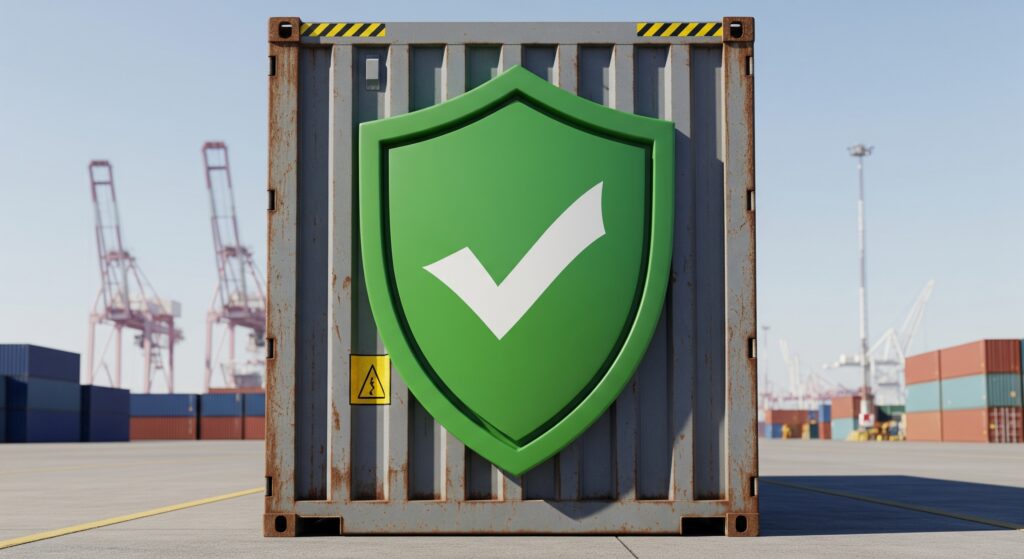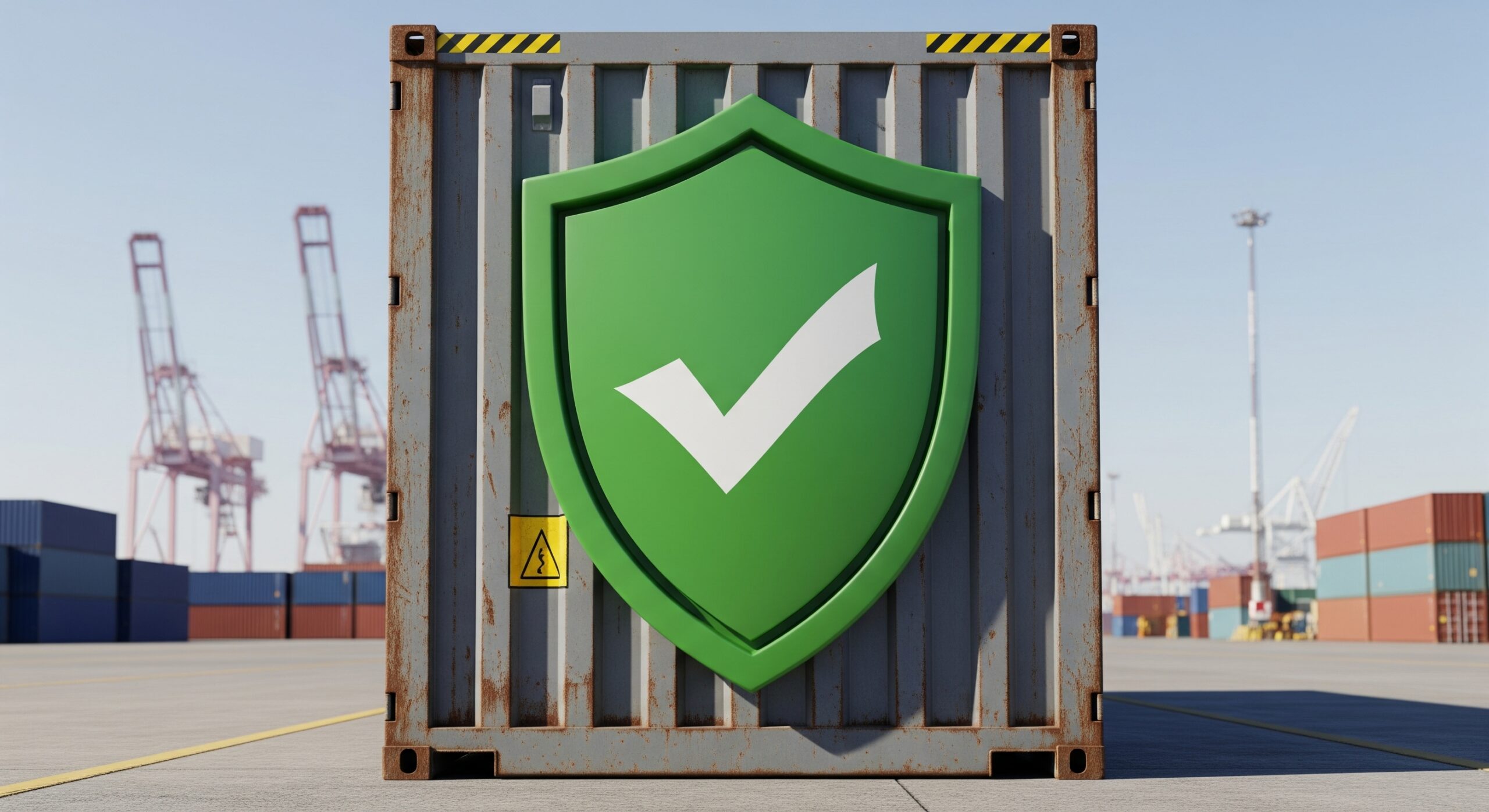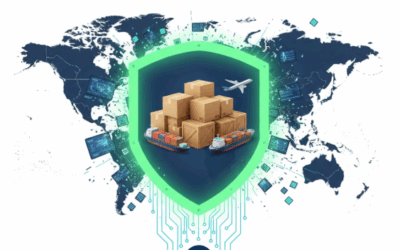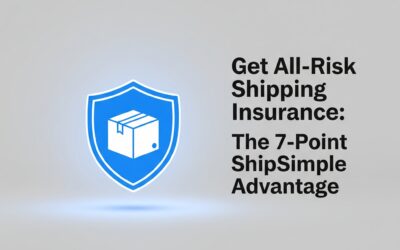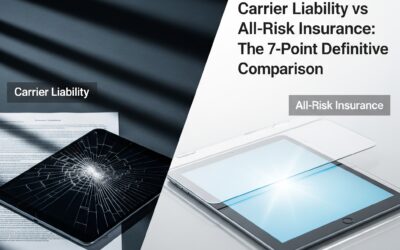For any business that ships goods, the moment a package leaves your hands is a moment of surrendered control. You place your trust in a complex network of logistics, hoping your product – and your reputation – arrives intact at its destination. But in a world where 1.7 million packages are lost or stolen every day in North America alone, hope is not a strategy. Damaged, lost, and stolen shipments aren’t just an inconvenience; they are a direct threat to your bottom line, your customer loyalty, and your peace of mind.
This is why shipping insurance exists. However, choosing a provider is one of the most critical and misunderstood decisions a business can make. It’s not just about getting a policy; it’s about finding a partner. A great partner has your back when things go wrong, making you whole again with speed and fairness. A bad partner will entangle you in red tape, hiding behind confusing shipping insurance jargon and a difficult claims process, leaving you to absorb the loss and deal with an angry customer.
The difference between the two comes down to one word: Trust.
This ultimate guide is designed to empower you with the knowledge to navigate the often-opaque world of shipping insurance. We will walk you through everything you need to know, from understanding the fundamentals to asking the tough questions that reveal a provider’s true character. By the end, you will be able to confidently select a shipping insurance company that not only protects your shipments but also acts as a genuine partner in your success.
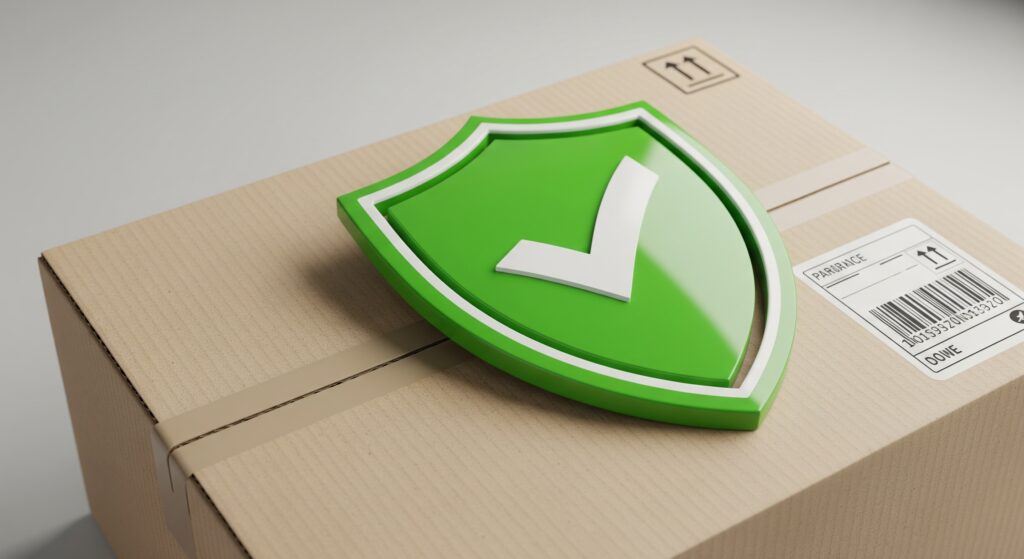
Part 1: The Foundations of a Trustworthy Shipping Insurance Partner
Before you can compare quotes or policies, you need a framework for what “good” looks like. In this section, we’ll establish the non-negotiable pillars of a trustworthy shipping insurance company and the critical red flags you must avoid.
Why You Can’t Afford to Rely on “Carrier Liability”
Many businesses, especially those just starting, make a common and costly mistake: they assume the declared value coverage offered by carriers (like Canada Post, UPS, or FedEx) is the same as true insurance. It is not.
Carrier liability is a limited, pre-defined amount of coverage that a carrier will pay out if they are found to be at fault for the loss or damage. This comes with several major caveats:
- Limited Coverage: Most carriers automatically include a meager $100 of liability. While you can pay for more, the cost is often higher than third-party insurance for less coverage.
- The Burden of Proof is on You: To receive a payout, you often have to prove the carrier’s negligence caused the damage. This can be incredibly difficult. Was your box crushed by their sorting machine, or was your packaging deemed “insufficient”? They get to make that call.
- A Minefield of Exclusions: Carrier liability is riddled with loopholes. They typically won’t cover “Acts of God” (like a storm delaying a truck), damage to perishable goods, or loss due to theft from a customer’s porch after it’s marked “delivered.”
- Slow, Adversarial Claims: Because you are filing a claim against the carrier themselves, their incentive is to minimize their own financial liability. The process can be painfully slow, bureaucratic, and often feels like you are being interrogated rather than helped.
True shipping insurance, offered by a third-party provider, is a distinct product. It’s a contract between you and the insurer designed to protect your financial interest in the shipment, regardless of who is at fault. It offers broader coverage, a simpler claims process, and a partner whose business model is based on helping you, not deflecting blame.
The Four Pillars of a Trustworthy Shipping Insurance Provider
Trust isn’t a vague feeling; it’s the result of a company’s deliberate choices in how they structure their policies, processes, and customer interactions. When evaluating any shipping insurance company, measure them against these four pillars.
Pillar 1: Radical Transparency
A trustworthy insurer has nothing to hide. They operate with clarity and honesty, ensuring you know exactly what you’re buying.
- Plain English Policies: The policy documents should be written for humans, not lawyers. You should be able to easily understand what is covered, what is excluded, the coverage limits, and the deductible. If a provider’s terms and conditions are a 50-page document filled with convoluted legal jargon, they are creating confusion, not clarity.
- Upfront, All-In Pricing: Hidden fees are a hallmark of untrustworthy companies. Your quote should be your final price. There should be no separate “admin fees,” “policy fees,” or other surprise charges that inflate your cost. Ask directly: “Is this the total, all-in price?”
- Honesty About Exclusions: No insurance policy covers everything. A trustworthy provider is proactive and upfront about what is not covered. They should provide a clear, concise list of exclusions (e.g., insufficient packaging, certain hazardous materials, shipping to specific high-risk countries). They don’t want you to be surprised later, because they value the long-term relationship.
Pillar 2: A Fair and Fast Claims Process
This is the moment of truth. All the promises a provider makes are tested when you need to file a claim. The claims process is the single most important indicator of a company’s integrity.
- Simplicity and Accessibility: Filing a claim shouldn’t feel like a second job. A modern, trustworthy provider will offer a simple, digital-first claims portal that you can access 24/7. It should guide you through the required steps and allow you to upload documentation (like photos of damage and commercial invoices) with ease.
- Speed of Resolution: In business, cash flow is king. You cannot afford to have money tied up for months while a claim is being processed. Ask for the provider’s average claim resolution time. A great provider measures their success in hours or days, not weeks or months.
- A Partnership Mentality: The tone of the claims process matters. Does it feel like they are on your side, working with you to get the required information? Or does it feel like an interrogation, where they are actively looking for a reason to deny your claim? A true partner wants to get you paid.
Pillar 3: Genuinely Supportive Customer Service
When you have a question or an urgent problem, you need to talk to a knowledgeable human who can help.
- Accessibility: You should have multiple channels to reach support—phone, email, and live chat. Crucially, these channels should be staffed by real people, not just chatbots or endless automated menus.
- Expertise: The support team should be composed of specialists in logistics and insurance, not just generic call center agents reading from a script. They should be able to provide expert advice on everything from how to pack a fragile item properly to what documentation is needed for an international claim.
- Empowerment: A great support agent is empowered to solve your problem on the first call. They don’t need to “escalate to a manager” for every minor issue. This shows the company trusts its own people and values your time.
Pillar 4: A Verifiable and Sterling Reputation
A company can say anything about itself. What matters is what their customers say about them.
- Independent Reviews: Look for reviews on third-party platforms like Google, Trustpilot, or industry-specific forums. Don’t just look at the star rating; read the content of the reviews, paying special attention to comments about the claims process.
- Case Studies and Testimonials: A confident provider will be proud to showcase their success stories. Ask for case studies or testimonials from businesses in your industry. This demonstrates that they understand your specific challenges and have a track record of success.
- Time in the Industry: While not a deal-breaker, a company that has been around for a while has weathered market changes and has a more established track record. They have a reputation to protect, which often translates to better service.
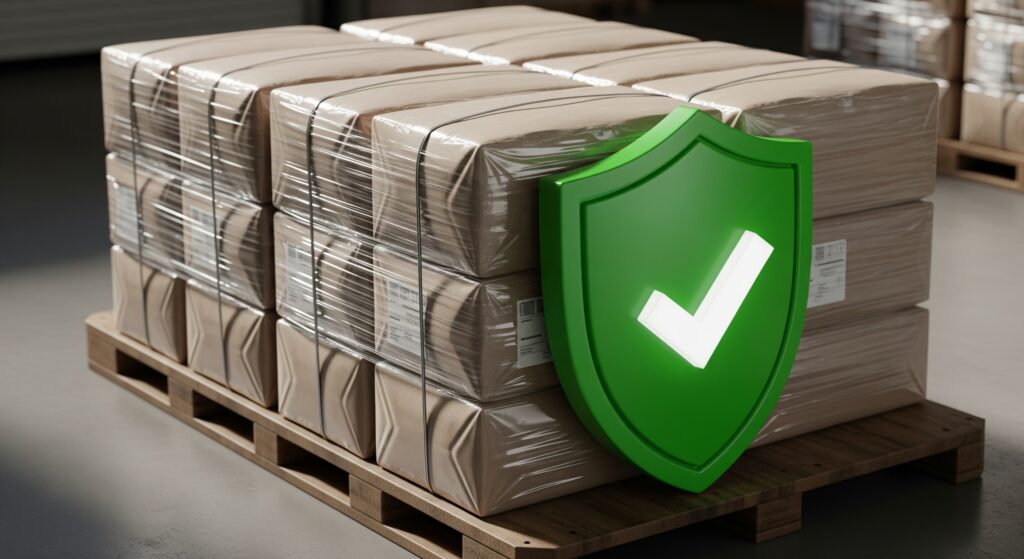
Part 2: Your Due Diligence Checklist: How to Vet and Compare Shipping Insurance Providers
Now that you have the framework for what makes a shipping insurance company trustworthy, it’s time to put it into action. This section is your practical guide to the vetting process, centered around the critical questions you must ask to peel back the marketing layers and reveal the truth.
The 5 Make-or-Break Questions to Ask Every Shipping Insurance Provider
When you’re on a sales call or reviewing a quote, don’t be passive. Take control of the conversation with these five questions. Their answers—and how they answer them—will tell you everything.
1. “Can you walk me through your exact claims process, step-by-step, from the moment I discover a problem to the moment the money is in my account?”
- Why It’s Critical: This question cuts through the marketing fluff (“easy claims!”) and forces a practical, operational explanation. A provider who has invested in a great process will be excited to show it off. One with a clunky, outdated process will be vague.
- A Great Answer Sounds Like: “Of course. You’d log into your ShipSimple portal, where all your shipments are listed. You’ll click ‘File a Claim’ next to the relevant tracking number. The system will then prompt you to upload a photo of the damaged item, the customer’s invoice to prove its value, and a brief description of what happened. Once submitted, our system confirms receipt instantly. A dedicated claims specialist reviews it within one business day to ensure all documents are in order. For straightforward claims, approval happens right then, and payment is issued within 24 hours. The entire process, from filing to payout, is typically under 72 hours, and you can track the status in real-time in your portal.”
- A Red Flag Answer Sounds Like: “You just need to fill out our claim form, which you can download from our website. You’ll need to email that to our claims department along with supporting documents. Someone from that department will then get back to you to let you know the next steps.” (This answer is vague, puts the onus on you, and gives no timeline or commitment.)
2. “What are the most common reasons a claim is denied under your policy?”
- Why It’s Critical: This question directly tests Pillar 1: Transparency. It forces the provider to be upfront about their policy’s limitations. An honest partner will give you a straight answer because they want you to be successful. A dishonest one will try to evade the question.
- A Great Answer Sounds Like: “That’s an excellent question. The vast majority of our claims are approved, but the two most common reasons for denial are insufficient packaging and shipping prohibited items. For example, if a glass vase is shipped in just a padded envelope with no box, that would be considered insufficient. We are very transparent about this and provide all our customers with clear packaging guidelines to help prevent this from ever being an issue. Our goal is to help you ship safely so you never have to file a claim in the first place.”
- A Red Flag Answer Sounds Like: “Our policies are very comprehensive, and we rarely deny claims. We look at everything on a case-by-case basis.” (This is a non-answer. It avoids specifics and doesn’t build confidence.)
3. “If I have a complex claim or an urgent issue, what level of support can I expect? Will I have a dedicated point of contact?”
- Why It’s Critical: This question probes Pillar 3: Support. It helps you understand if you’ll be treated like a valued partner or just another ticket number in a queue.
- A Great Answer Sounds Like: “You’ll have access to our entire Canada-based expert team via phone, email, and live chat during business hours. For any active claim, you are assigned a specific claims specialist. Their direct contact information is provided in the portal, so you always know exactly who to talk to. You won’t be bounced around a call center.”
- A Red Flag Answer Sounds Like: “You can call our 1-800 support line, and an agent will be happy to assist you.” (This suggests a generic, tiered support system where you’ll likely have to re-explain your issue multiple times.)
4. “Can you explain the difference between ‘All-Risk’ and ‘Named Perils’ coverage and tell me which one this policy is?”
- Why It’s Critical: This technical question tests the provider’s expertise and their willingness to educate you. Understanding this distinction is vital.
- A Great Answer Sounds Like: “Great question. ‘Named Perils’ insurance only covers losses from the specific risks listed in the policy, like fire, theft, or flood. If your loss is caused by something not on that list, you’re not covered. ‘All-Risk’ insurance, which is what we offer, is much broader. It covers you for any and all risks of physical loss or damage from any external cause. Instead of listing what is covered, it only lists what is not covered (the exclusions we discussed earlier). It provides the most comprehensive protection, which is why we’ve made it our standard.”
- A Red Flag Answer Sounds Like: “Our policy offers very comprehensive coverage for your shipments.” (Again, this is a vague, evasive answer that fails to address the specific technical question.)
5. “If I get a cheaper quote from another provider, what would you say are the top three reasons I should still choose you?”
- Why It’s Critical: This question moves the conversation from price to value. It forces the provider to articulate their unique strengths and justify their cost.
- A Great Answer Sounds Like: “First, the speed and simplicity of our claims process. A cheaper policy is worthless if you can’t get paid quickly when something goes wrong. Our 72-hour resolution time means your cash flow isn’t impacted. Second, the expertise of our support team. We help you prevent losses, not just cover them. Third, our integration. Because our insurance is part of a complete shipping platform, everything is managed in one place, saving you significant administrative time, which has a real dollar value.”
- A Red Flag Answer Sounds Like: “We have the best service” or “We can try to match their price.” (These answers show they are competing on price alone, not on superior value.)
Part 3: Making the Final Choice: Why the Modern Approach to Shipping Insurance Wins
You’ve done your homework, and you’ve narrowed it down to a few options. Now, you need to make the final decision. This is where you must look beyond the policy itself and consider the total experience. The cheapest policy is not always the least expensive one. A difficult claims process can cost you thousands in lost time, administrative headaches, and, most importantly, lost customers.
This is why a modern, integrated approach to shipping insurance is becoming the preferred choice for savvy Canadian businesses.
The Old Way vs. The New Way: A Tale of Two Shipping Insurance Models
The Old Way: The Traditional Insurance Runaround
This model is characterized by fragmentation and friction.
- You buy insurance as a separate, isolated product. You manage shipping on one platform and insurance on another.
- The policies are often complex and written in dense legal language. They are designed to protect the insurer first and foremost.
- The claims process is manual and paper-based. It involves downloadable PDF forms, email chains, and long waits for a response.
- Support is siloed. The people who sold you the policy are not the same people who handle your claim, leading to a disconnected and frustrating experience.
- The business model is often adversarial. The process can feel like a battle to prove your loss, with the insurer looking for reasons to deny the claim and protect their bottom line.
This model creates a massive administrative burden and significant financial uncertainty.
The New Way: Integrated, Transparent, and Customer-Centric
This is the model pioneered by platforms like ShipSimple. It’s built from the ground up to eliminate the friction of the old way.
- Shipping Insurance is integrated directly into your shipping workflow. You can add coverage to any shipment with a single click. All your shipping and insurance data lives in one central, easy-to-use portal.
- Policies are designed for simplicity and clarity. The focus is on making coverage easy to understand and use.
- The claims process is digital, streamlined, and fast. It’s built for the speed of modern e-commerce, with online filing and resolution times measured in hours or days.
- Support is holistic. The same team of experts can help you with a shipping question or a claim, providing a seamless experience.
- The business model is based on partnership. The platform’s success is tied to your success. A fast, fair claims payment leads to a happy, loyal customer who will continue to use the platform for all their shipping needs. The incentives are aligned.
“Before ShipSimple, filing a claim was a month-long nightmare. We had a pallet damaged in transit, and our old provider gave us the runaround for weeks. With ShipSimple, we had a single damaged parcel last quarter. I filed the claim on my phone in five minutes, and the payment was in our bank account two days later. The difference is incredible. It’s not just insurance; it’s true peace of mind.” – A Toronto-based E-commerce Manager
Why Businesses Across Canada Trust ShipSimple for Shipping Insurance
Choosing a shipping platform with built-in, trustworthy shipping insurance isn’t just about convenience; it’s a strategic business decision. It’s a choice to prioritize efficiency, customer satisfaction, and financial security.
ShipSimple was built to be the embodiment of this “New Way.” Every feature of our shipping insurance program was designed to directly address the failures of the traditional model and to build the trust that businesses deserve.
- We Trust You: Our claims process starts from a position of trust. We believe you, and our job is to help you get the documentation in order to process your payment quickly.
- We Value Your Time: Our integrated platform and digital claims process can save your team hours of administrative work every month. That’s time you can reinvest in growing your business.
- We Protect Your Customer Relationships: When you can resolve a lost or damaged shipment for a customer in days, not weeks, you turn a negative experience into a positive one, building even stronger loyalty.
Your Final Decision
Choosing a shipping insurance company is too important to be an afterthought. It’s a decision that impacts your finances, your operations, and your brand.
As you make your final choice, look past the price per $100 of coverage. Ask yourself:
- Which provider is most aligned with my business values?
- Which claims process will save me the most time and stress?
- Which company is demonstrating through its actions and processes that it will be a true partner when I need it most?
Your shipments are the lifeblood of your business. Protect them with a partner you can unequivocally trust.
Ready to experience a better way to ship and insure?
The ShipSimple platform integrates powerful, reliable shipping insurance right into your workflow. Get an instant, all-in quote, manage everything in one place, and experience the peace of mind that comes from a claims process built on speed, fairness, and trust.
Get Your Free Shipping Insurance Quote Today
